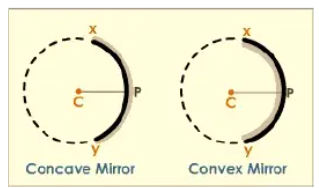OPTICS
- Er. Akhil A R

- Mar 28
- 3 min read
In a plain mirror, the principles of optics explain how light behaves to form images. When light rays from an object strike the smooth, reflective surface of a mirror, they obey the law of reflection, which states that the angle of incidence equals the angle of reflection. This creates a virtual image behind the mirror, which appears to be the same distance behind the mirror as the object is in front. The image is upright, of the same size, and laterally inverted (left appears as right and vice versa). Since no light actually comes from behind the mirror, the image cannot be captured on a screen, making it virtual. This concept is widely used in daily life, such as in household mirrors, dressing mirrors, and vehicle rearview mirrors.
REFLECTION OF LIGHT

When a ray of light after incidents on a boundary separating two media comes back in to the same media, then this phenomenon, is called reflection of light.
LAWS OF REFLECTION
Angle of incidence (∠i ) is equal to the angle of reflection (∠r ).
∠i =∠r
The incident ray, the reflected ray and the normal, all lie in the same plane.
Angle of incidence:
The angle made by the incident ray with normal to the surface is called as angle of incidence (∠i ).
Angle of reflection:
The angle made by the reflected ray with the normal to the surface is called as angle of reflection ( ∠r ).
TYPES OF REFLECTION
The reflection of light can be roughly categorized into two types of reflection.
Regular reflection
Irregular reflection
Regular reflection:
When a beam pass of parallel right rays is incident on a smooth and plane surface, the reflected rays will also be parallel. This type of reflection is called regular or specular reflection.
Irregular reflection:
When as beam of parallel light rays incident on a rough surface will reflect in different directions. This type of reflection is called irregular or diffused reflection.

REFLECTION FROM A PLANE SURFACE (PLANE MIRROR)
The image formed by a plane mirror is virtual, erect, laterally inverted, equal in size as that of the object and at a distance equal to the distance of the object in front of the mirror.
The line joining the object point with its image is normal to the reflecting surface.
For a real object the image is virtual and for a virtual object the image is real.
The minimum size of a plane mirror, required to see the full size image, is half the size of the object.
For a light ray incident at an angle ‘i’ after reflection angle of deviation d = π -2i
If ∠i = 0 then, ∠r =0, this implies that a ray of light incident normally on a mirror retraces its path.
They eye always observes an object in the direction in which the rays enter the eye.
The laws of reflection hold good for all kinds of reflection.
Image of an object is the point at which rays after reflection actually converge or appear to diverge from that point.
Image of an object is the point at which rays after reflection actually converge or appear to diverge from that point.
If the direction of the incident ray is kept constant and the mirror is rotated through an angle θ about an axis in the plane mirror then the reflected ray rotates through an angle 2θ.
If an object moves towards or away from a plane mirror at a speed v, the image will also approach or recede at the same speed. Further the relative speed of the image to the object will be 2v.
If two plane mirror are inclined to each other at 90°, the emergent ray is always antiparallel to incident ray, if reflected from each mirror, irrespective of angle of incident.
When two plane mirror, inclined to each other at an angle 0, the number of images formed can be
determine as follows:
If 360°/θ is an even integer, say 'p', then number of images formed say q = p-1, for all θ positions.
If 360°/θ is an odd integer, say 'q', then number of images formed say p = q, if the object is not on the bisector of the angle between mirrors. Also, p = q-1, if the object is on the bisector.
If 360°/θ is a fraction, then the number of images formed will be equal to its integral part.
The linear magnification is unity.
Angle of deviation & when a ray incident at an angle Zi is given by 180° - 24i






Comments